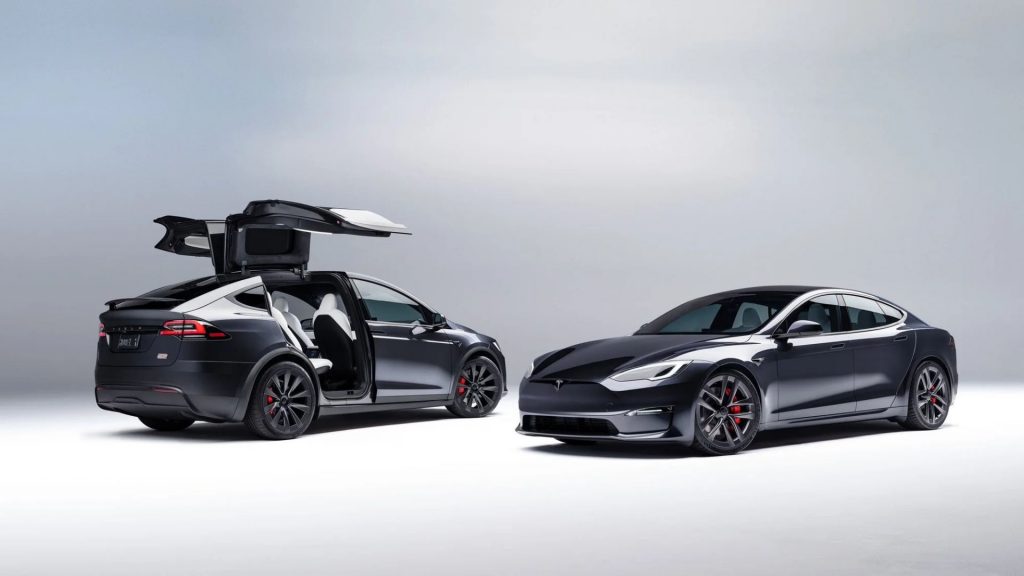In addition to being more costly and heavier, the Model S Plaid’s top speed has decreased.
Fans are not happy with the latest update to the ageing Tesla Model S and Model X. Because these vehicles are more costly, heavier, and slower, potential customers find the Model 3 and Model Y—their more reasonably priced siblings—even more alluring.
Furthermore, none of the additional features seen on the contentious Cybertruck—such as rear-wheel steering, steer-by-wire, and an 800-volt battery pack—are included in the revised EVs. All of this was quickly pointed out by enthusiasts on Tesla’s official X account.
- The 2026 Tesla Model S and Model X are here.
- The two flagship EVs get minor updates inside and out.
- Some versions have a longer driving range.
“Don’t steer by wire. Not 800V. Not a little more power. One reader responded to the automaker’s post outlining all the new features of the updated Model S and Model X by saying, “You’re falling behind, guys.” Another user commented, “This refresh did not impress me.” “Go observe and emulate the actions of Rivian, Lucid, Escalade IQ, and EV9.” A disappointed admirer went on, “People want real three-row SUVs with more tech and range, and this isn’t that.”
What’s new, then? A modified suspension design and new bushings have improved the ride quality of both EVs. According to Tesla, a more efficient Active Noise Cancellation system and reduced wind and road noise have made the cabin quieter than it was previously. Additionally, the centre console’s two sides, the dashboard, and the front and rear doors now have multicoloured ambient lighting. Passengers can now customise the LED footwell lights and LED lights in the door pockets from white to any other colour they like.
Along with updated wheel designs and a modified exterior for better aerodynamics, adaptive driving beams are also available. Frost Blue is a brand-new exterior colour that is currently offered. For improved visibility, a front bumper camera with a dedicated washer has been introduced, and the Model X offers a little extra capacity for third-row passengers and goods. The updated Model X boasts a total of 94.5 cubic feet of cargo space, which is 2.5 cubic feet more than the previous model.
All of the new EV models are now $5,000 more expensive than they were previously; the base Model S All-Wheel Drive, which has a range of 410 miles, costs $86,630. The Model S Plaid costs $101,630 and has a top speed of 149 miles per hour currently, down from 200 mph before. Nevertheless, the Model S Plaid’s projected range increased from 348 to 368 miles. The AWD version of the Model S Plaid has stayed relatively constant, while the model itself has grown 26 pounds (11.7 kilogrammes) heavier.
Starting at $91,630, the Model X All-Wheel Drive has a range of up to 352 miles, which is 38 more than the previous model. In contrast, the Model X Plaid costs $106,630 and has a range of up to 335 miles on a full charge, which is 21 more than the previous model. The Model X Plaid’s top speed remains unchanged. Its weight isn’t, though. The AWD model weighs 4 pounds (1.8 kg) more than the Plaid, which is now 186 pounds (83 kg) more, tipping the scales at 5,435 pounds (2,465 kg).
Once the standard option for the Model S and Model X, the yoke steering wheel is now completely absent from the base models and is only available as a $1,000 option on the Plaid grades.
In the US, the new Tesla Model S and Model X are currently on sale. It’s easy to understand why Tesla hasn’t invested more in this update, even though the new features aren’t particularly noteworthy. In recent years, sales of the Model S and Model X have plummeted, and according to Tesla’s delivery report, both vehicles are now classified as “Other Models”. Compared to the Model 3 and Model Y, which together saw deliveries of 1.4 million units worldwide, the company’s 85,133 “Other Models”, which include the Cybertruck and Semi, last year are a drop in the ocean.

